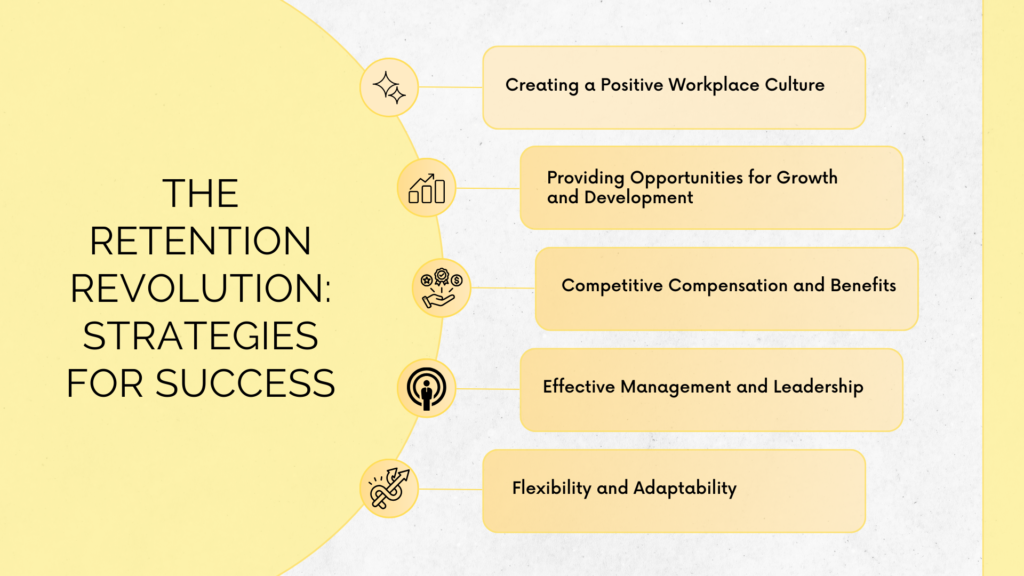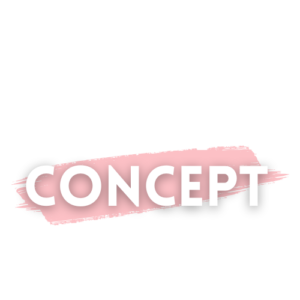
Mastering Employee Retention Revolution for Lasting Workplace Success
Photo by Catherine Breslin on Unsplash
Talent retention is not just about keeping employees; it's about creating an environment where individuals feel valued, engaged, and have opportunities to learn and grow, fostering a culture where people want to stay and contribute their best.
inspired by Amy C. Edmondson's "Fearless Organizations"
In the dynamic landscape of modern workplaces, businesses face an ongoing challenge: high employee turnover. The revolving door of talent not only disrupts operations but also undermines the foundation of success. In this article, we embark on a journey to explore the Retention Revolution—a transformative approach that holds the key to reducing turnover, fostering wellbeing at the workplace in a team, and, in turn, building a winning team.
The Challenge of High Employee Turnover
Furthermore, employee turnover rates have been on the rise, leaving organizations grappling with the consequences. Frequent departures disrupt workflow, erode institutional knowledge, and demand continuous recruitment efforts. This recurring cycle can be an insurmountable hurdle for businesses aiming to thrive in an increasingly competitive marketplace.
The Importance of Building a Winning Team
“At the core of every successful organization lies a winning team—a group of individuals united by shared goals and a commitment to excellence,” an assertion that resonates with the principles elucidated in Jim Collins’ renowned book, “Good to Great” (Collins, J., 2001), where he underscores the significance of assembling a high-performing team. Building such a team is not a mere aspiration; it’s a necessity for businesses striving to stay ahead in a fast-paced world.
Calculating the Financial Impact of Employee Turnover
Let’s begin by quantifying the financial impact of employee turnover. This isn’t just about budgets; it’s about measuring outcomes.
– According to a report from the Society for Human Resource Management (SHRM), when an employee leaves, it can cost the organization between 50% and 60% of that employee’s yearly earnings.
– For positions that pay less than $50,000 annually, a study by the Center for American Progress discovered that turnover expenses can amount to as much as 20% of the employee’s yearly income.
– If an organization frequently experiences high employee turnover rates, a report from the Aberdeen Group indicated that they are nearly 30% less likely to meet their revenue targets.
Hidden Costs Beyond Monetary Losses
Moving beyond the financial aspects, let’s explore the more subtle but equally important consequences of turnover. As Maya Angelou astutely noted, “People may forget your words, they may forget your actions, but they will never forget how you made them feel.”
– Gallup’s research reveals that disengaged employees who continue in their positions can reduce team productivity by as much as 18%.
– According to Harvard Business Review, the departure of employees can result in the loss of institutional knowledge and relationships, hindering innovation and collaboration.
The Ripple Effect on Team Morale and Productivity
Furthermore, let’s examine how turnover affects team morale and productivity, creating a ripple effect that can spread throughout the organization like wildfire if left unaddressed. Albert Schweitzer wisely noted, “Example is not the main thing in influencing others. It is the only thing.”
- Research by the Corporate Executive Board found that when an employee leaves, it can take an average of 17 weeks for a new hire to reach the same level of productivity.
- A Gallup poll reveals that employees who witness frequent turnover within their teams are more likely to become disengaged and actively seek new job opportunities.
- According to a study in the Journal of Applied Psychology, the negative impact of turnover on team morale can persist for up to six months after an employee departs.
Retention isn't just about keeping employees from leaving; it's about creating an environment where they want to stay, contribute, and thrive.
Susan Heathfield
The Factors Driving Employee Turnover
Now that we’ve set the stage for our Retention Revolution, let’s dive into the nitty-gritty of what makes employees bid farewell to their workplaces. Understanding these factors is like having the treasure map to retention success.
Identifying Common Reasons Employees Leave
- Lack of Growth Opportunities: One major motivator for employees seeking new horizons is the feeling that they’ve hit a career dead-end. They want to spread their wings, learn new things, and climb the professional ladder. Steve Jobs once emphasized, “The only way to do great work is to love what you do.” This resonates with the notion that a lack of growth opportunities can lead to stagnation, causing employees to lose their enthusiasm for their roles.
- Poor Work-Life Balance: Striking a balance between work and personal life is crucial. When employees feel constantly overwhelmed or unable to spend quality time with loved ones, it’s a recipe for dissatisfaction. We discussed whether it’s possible to achieve it even in the challenging world of startups here. Plus, I want to emphasize that founders should consider the concept of “ultradian rhythms” and encourage their teams to take more breaks. Find out how understanding ultradian rhythms can help you boost productivity in this article.
- Inadequate Compensation and Benefits: Money talks, and employees want to be fairly compensated for their hard work. When salaries and benefits don’t measure up to their expectations, it’s a strong incentive to explore greener pastures. Steve Jobs’ words also echo in the context of inadequate compensation and benefits, as he emphasized, “Your work is going to fill a large part of your life, and the only way to be truly satisfied is to do what you believe is great work.” When employees perceive their compensation as inadequate, they may start exploring options where they feel more valued.
- Conflict with Management or Colleagues: Nobody enjoys working in a hostile environment, as it can be a deal-breaker when there’s constant friction with bosses or colleagues. Toxic work environments not only erode job satisfaction but also significantly contribute to employee turnover, making it crucial for organizations to address these issues.
- Generational Differences: Today’s workforce is more diverse than ever, with multiple generations working side by side. Understanding and managing the expectations of each generation is essential to prevent misunderstandings and conflicts.
As we unravel the reasons behind employee turnover, keep in mind that addressing these issues is like applying the brakes to the turnover train. Stay with us as we move closer to our goal of building a winning team by tackling these challenges head-on.
The best way to retain employees is to keep them engaged, challenged, and motivated, providing them with opportunities to learn, grow, and advance in their careers.
David Allen
Case Studies: Organizations That Mastered Retention
Retention Strategy: Google focuses on employee well-being, offering wellness programs, on-site healthcare, and flexible work arrangements. Career development is a priority, with employees encouraged to pursue their passions and interests within the organization. Regular feedback and recognition contribute to a positive work environment, enhancing employee satisfaction and loyalty.
Impact: High employee satisfaction and low turnover rates, fostering a culture of innovation and productivity.
The Walt Disney Company
Retention Strategy: Disney focuses on creating a magical workplace experience for its employees. They provide numerous perks, including free theme park admission, discounts on merchandise and entertainment, and exclusive events. Disney also emphasizes employee development through extensive training programs, mentorship, and opportunities for career advancement.
Impact: Disney’s dedication to cultivating a distinctive and enjoyable workplace has resulted in a reduced turnover rate within the entertainment and hospitality sector. This commitment motivates employees to remain with the company, bolstering Disney’s reputation as an attractive employer.
Microsoft
Retention Strategy: Microsoft prioritizes professional growth and development as a key component of its employee retention strategy. They provide an extensive array of learning and development opportunities, such as online courses, certifications, and leadership programs. Additionally, Microsoft offers a flexible work environment, including remote work options, to help employees maintain a healthy work-life balance.
Impact: Microsoft’s focus on skill development and flexibility has contributed to a lower turnover rate in the tech industry. Employees appreciate the company’s commitment to their personal and professional growth, which enhances retention.

The Retention Revolution: Strategies for Success
Welcome to the heart of our Retention Revolution—a treasure trove of strategies that will help you reduce turnover and build a winning team. These practical steps are like building blocks that can transform your workplace into a haven for talent.
1. Creating a Positive Workplace Culture
- Fostering a Sense of Belonging and Inclusion: Employees thrive when they feel like they belong. Creating an inclusive environment where diverse voices are heard and valued is a surefire way to boost retention. “To improve employee retention, in his book “The Best Place to Work: The Art and Science of Creating an Extraordinary Workplace” Ron Friedman suggests fostering a sense of belonging as employees who feel they belong are more likely to stay.”
- Prioritizing Employee Well-being: Happy employees are loyal employees. Demonstrate your team’s well-being as a priority by providing wellness programs, mental health support at work, and fostering a healthy work environment. If you’re seeking valuable advice to tackle burnout in the startup realm, you’re in the right spot. This article is packed with practical advice to help you stay energized and focused in the challenging startup landscape.
- Promoting Work-Life Balance: Striking a balance between work and life is vital. Encourage employees to unplug, take breaks, and enjoy personal time. A harmonious life outside work translates into a happier, more engaged workforce.
2. Providing Opportunities for Growth and Development
- Employee Training and Upskilling Programs: Invest in your employees’ growth by offering training and upskilling opportunities. This not only enhances their skills but also shows your commitment to their future. “Drawing from Daniel H. Pink’s insights in ‘Drive,’ investing in employee development through training and upskilling programs not only enhances their skills but also fosters loyalty.”
- Career Advancement Pathways: Employees want to see a clear path to success within your organization. Provide a roadmap for career advancement, and they’ll be more likely to stay for the long haul. “Reid Hoffman, Ben Casnocha, and Chris Yeh, authors of ‘The Alliance,’ emphasize the power of clear career advancement pathways and opportunities for growth in retaining top talent.”
3. Competitive Compensation and Benefits
- Fair and Transparent Pay Structures: Fair pay is the foundation of employee satisfaction. Ensure that your compensation packages are competitive and transparent to retain top talent.
- Comprehensive Benefits Packages: In addition to salary, comprehensive benefits like healthcare, retirement plans, and perks can make a significant difference in retaining employees.
4. Effective Management and Leadership
- Building Strong Relationships with Employees: Great leaders forge connections with their team members. Invest in building strong relationships, and you’ll earn the loyalty of your employees.
- Conflict Resolution and Communication Skills: Equip your managers with the skills to resolve conflicts and communicate effectively. A harmonious workplace is less likely to see talent walk out the door.
5. Flexibility and Adaptability
- Embracing Remote Work and Flexible Schedules: Today’s workforce values flexibility. Embrace remote work options and flexible schedules to accommodate changing work preferences. “In ‘Remote: Office Not Required’ by Jason Fried and David Heinemeier Hansson, and ‘Drive: The Surprising Truth About What Motivates Us’ by Daniel H. Pink, the authors emphasize the significance of embracing remote work and offering flexible schedules to retain employees by accommodating their evolving work preferences.” By the way in my next posts, we’ll be talking about how to stay healthy and happy while working from home. Don’t miss out – keep an eye on our updates!
- Adapting to Changing Employee Needs and Preferences: Stay attuned to your employees’ evolving needs. Flexibility and adaptability are key to keeping your team satisfied and engaged. “Adapting to changing employee needs and preferences, a theme discussed in ‘The Lean Startup’ by Eric Ries and ‘Who: The A Method for Hiring’ by Geoff Smart and Randy Street, is essential for retaining talent in an ever-evolving workplace where individual requirements vary.”
For a deeper dive into this topic, explore the article by Helen Tupper and Sarah Ellis, ‘It’s Time to Reimagine Employee Retention.’ As employee turnover is anticipated to rise significantly, it’s imperative to shift our focus from recruitment to talent retention and development. Managers will need support in nurturing career growth, cultivating a culture of experimentation, and incentivizing organization-wide talent retention. As we embark on this Retention Revolution journey, these strategies work in harmony to create an environment where employees want to stay and thrive. Stay tuned for practical tips and insights on implementing these strategies effectively.
Conclusion
In the constantly changing landscape of work, the Retention Revolution emerges as a source of optimism. It’s not merely about retaining talent; it’s about cultivating a successful team. As we peer into the future, one thing remains evident. Employee retention isn’t a quick solution; it’s a continuous dedication. It’s a journey marked by adaptation and innovation.
Remember, the power of retention extends far beyond saving costs; it’s the linchpin to organizational success. By fostering a culture of belonging, prioritizing growth, and embracing data-driven strategies, you’re not just reducing turnover; you’re building an unstoppable, winning team poised to conquer the challenges of tomorrow. So, let the Retention Revolution reign on!
